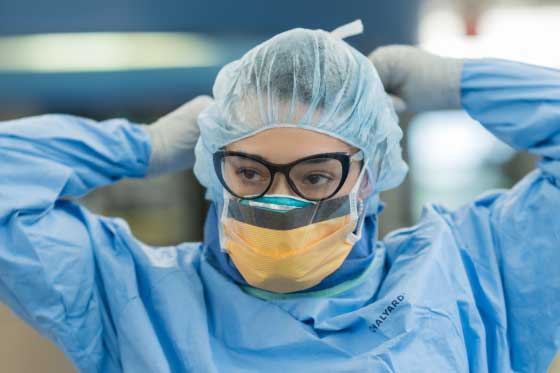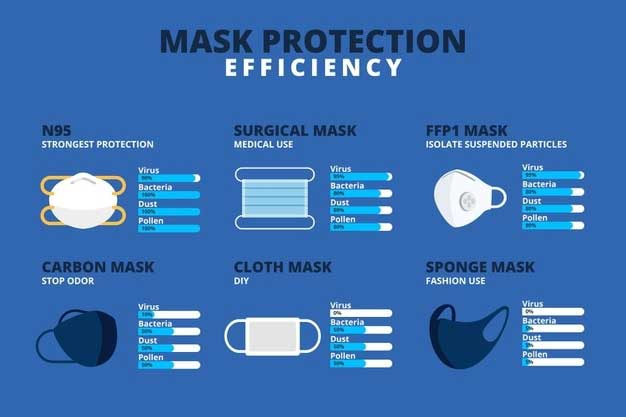|
Regulatory Perspective
Of Testing Of Masks, Hand Gloves
And PPE In The Midst Of Covid-19
|
 |
Dr. Manish A Rachchh
Director (R&D) & CEO
Accuprec Research Labs Pvt. Ltd. |
Corona virus disease (Covid-19) is an
infectious disease caused by a newly discovered
coronavirus. WHO has declared Covid-19 as pandemic since
11 March 2020.1,2 The Covid-19 virus spreads primarily
through droplets of saliva or discharge from the nose
when an infected person coughs or sneezes, so it’s
important that one also practice respiratory etiquettes
(for example, by coughing into a flexed elbow). Further
to prevent the spread of Covid-19, governments across
the globe issued guidelines for public to wear face mask
covering mouth and nose, maintain hand hygiene and
follow physical distancing norms.
The COVID-19 pandemic is rapidly
spreading across countries and regions, causing huge
impact on people’s lives and communities. Till 31st May
2021, cumulative Covid-19 confirmed case was 281,73,883
& death was 331,911 in India.3 Starting as a health
crisis, it now poses serious threats to the global
economy, trade and finance with estimated economic
impacts to range between $2 trillion and $4 trillion
globally.
The World Health Organization (WHO)
estimated that more than 45 million medical devices like
masks and gloves are required for the COVID-19 response
each month, along with 76 million examination gloves and
1.6 million medical goggles (WHO 2020). WHO itself has
so far shipped nearly half a million sets of personal
protective equipment (PPE) to 47 countries, but supplies
are depleting rapidly. To meet rising global demand, WHO
estimates that industry must increase manufacturing by
40% and urges governments to act quickly to boost
supply.
This serious situation has provoked the
manufacturing of the PPE (Personal Protective
Equipment’s ) . Meanwhile to ensure the quality aspect
the testing of the PPE has become an important
prospective for keeping the corona worrier safe. As the
spreading of the corona is controlled by the use of the
PPE. The demand of medical devices like masks, gloves
and PPE kits before the Covid-19 were very less as
compared to current situation. The hand gloves, surgical
masks and PPE were used mainly for surgery in hospitals,
blood and other analytical tests in pathological
laboratories and radiological centers and
microbiological analysis in pharmaceutical industries.
Due to Covid-19, medical device use has been drastically
increased across the globe like N95 masks, surgical
masks, hand gloves, PPE kits, face shield, sanitizers,
etc. There are various standards published for the
establishing the safety, efficacy and quality of these
products. Every country has defined their requirements
in the guidelines and follows accordingly to establish
these quality, efficacy and safety.
In India, these products fall under the
category of medical devices. India has defined
requirements for medical devices as per Drugs and
Cosmetics Act 1945 and Medical Devices Rules, 2017. As
of now, CDSCO has not started regulation of such
products but included in draft guideline document as a
proposed products going to be regulated. Till that the
MoH, GoI has published guidance document about quality
standards that our PPE material shall complies.
There are countries that do not have
specific requirements laid out in their regulations for
PPE - products; such countries follow various
internationally acceptable standards like ISO, ASTM
(USA), AATCC (USA), EN (Europe) etc. In India, these
medical devices are tested according to Bureau of Indian
Standards and also internationally accepted standards.
Masks:
A surgical mask is a loose-fitting, disposable mask that
creates a physical barrier between the mouth and nose of
the wearer and potential contaminants in the immediate
environment. Surgical masks are not to be shared and may
be labeled as surgical, isolation, dental, or medical
procedure masks. They may come with or without a face
shield. These are often referred to as face masks,
although not all face masks are regulated as surgical
masks. Performance testing of Surgical mask shall meet
the requirements of IS 16289 or EN 14683.

If worn properly, a surgical mask is meant to help block
largeparticle droplets, splashes, sprays, or splatter
that may contain germs (viruses and bacteria), keeping
it from reaching your mouth and nose. Surgical masks may
also help reduce exposure of your saliva and respiratory
secretions to others. While a surgical mask may be
effective in blocking splashes and largeparticle
droplets, a face mask, by design, does not filter or
block very small particles in the air that may be
transmitted by coughs, sneezes, or certain medical
procedures. Surgical masks also do not provide complete
protection from germs and other contaminants because of
the loose fit between the surface of the mask and your
face.
A triple layer/four layer medical mask is a disposable
mask, fluid - resistant, provide protection to the
wearer from droplets of infectious material emitted
during coughing, sneezing, talking.
N-95 mask is a
protective device with high filtration efficiency to
airborne particles. To provide the requisite air seal to
the wearer, such masks are designed to achieve a very
close facial fit. Such mask should have high fluid
resistance, good breathability (preferably with an
expiratory valve), clearly identifiable internal and
external faces, duckbill/cup-shaped structured design
that does not collapse against the mouth. If correctly
worn, the filtration capacity of these masks exceeds
those of triple layer medical masks. Since these provide
a much tighter air seal than triple layer medical masks,
they are designed to protect the
wearer from inhaling airborne particles. Performance
testing of N-95 masks shall meet the requirements of
ASTM F2100-19 or EN 149 guidelines.

WHO recommends Fabric masks should be
made of three layers of fabric: Inner layer of absorbent
material, such as cotton. Middle layer of non-woven
non-absorbent material, such as polypropylene. Outer
layer of non-absorbent material, such as polyester or
polyester blend. |
